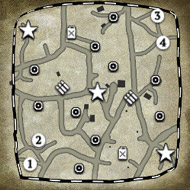AT is inexplicably worse against certain targets like infatry...
Mortar is real life are designed to counter trenches and earth bunkers, in this patch the mortars life will suddenly become inexplicably worse against trenches than ATG that in turn useless vs trenches in real life.
Mortars aren't for entrenched positions, and that's the fundamental flaw in their game design. Mortars are for breaking up concentrated attacks in open terrain where the shrapnel can fly everywhere. The chances of landing a mortar shell in a trench is quite difficult, and will at best only affect a few soldiers since trenches are built with curves etc. The only time you would expect mortars to affect an entrenched enemy is if you've got an unlimited number of shells, and all the time in the world.
What the mortar should be is a blob punisher, as it is in real life. It was cannons and mortars that killed mass formation warfare after all.
If the game wants mortars to have a serious role in the game the following needs to happen:
Drastically reduce damage on mortar shells. No more than 10-20 HP per model.
Drastically increase the AOE radius.
Increase the projectile speed.
Increase the range.
If possible add a special 'adjustment shell' to the barrage that's fired first, and lands almost instantly. Ought to do low damage, but will suppress if it hits at least two squads, and possibly pin if it hits 3 or some other number. It shouldn't be enough to suppress a single squad.
The end idea would be that mortars are no more than a nuisance to a single squad; however, the auto-attack would be cause serious damage to a blob, and the barrage would be a near force retreat.























 cblanco ★
cblanco ★  보드카 중대
보드카 중대  VonManteuffel
VonManteuffel  Heartless Jäger
Heartless Jäger 